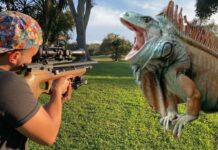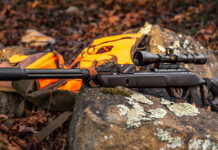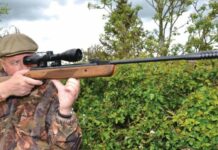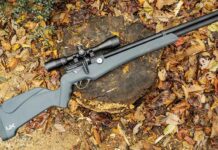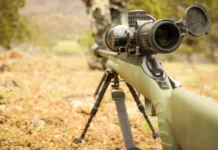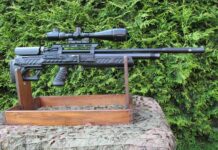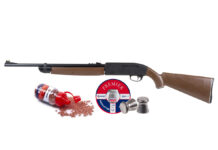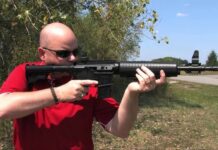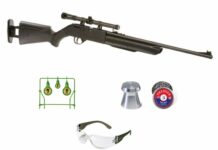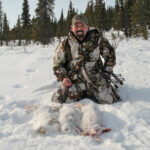The sleeping habits of a deer are probably some of the most interesting out of all the large land mammals. How deer sleep is so different from what we are used to as humans, that it makes them a very interesting topic to look into.
This overview covers a wide range of facts about how deer sleep, why they do it that way, and how it helps them survive in the wild. Let’s get right into it!
Table of Contents
- 1. Some Deer Sleep Standing Up
- 2. Deer Can Sleep With Their Eyes Open
- 3. They Sleep In Super Short Intervals
- 4. If Deer Sleep In Your Yard, They Feel Safe
- 5. Returning To Sleep In The Same Spot
- 6. Fawns Sleep With An Extreme Heartrate
- 7. Deer Don’t Usually Sleep At Night
- 8. Winter Hibernation Is Not For Deer
- 9. Bucks In Rut Rarely Ever Sleep
- 10. Sleeping Beside The Road Is Common
- 11. Like All Mammals, Deer Are Able To Dream
1. Some Deer Sleep Standing Up
Although it is not very common, some deer have been observed sleeping while standing up. The upright position is rare, because most adult deer sleep on their side with their heads up. Young fawns will lie down curled up, with their nose tucked under their legs.
Most individuals will not stand up because they lose muscle control while sleeping, just like humans do.
However, just like humans have the ability to sleep-walk, so can some deer! The main reason the animals might do this is to be extra alert about potential dangers in their immediate surroundings.
2. Deer Can Sleep With Their Eyes Open
Because a prey species like deer need to be on high alert at all times, it is not uncommon for deer to sleep with their eyes open. The animals fall into a daydream-like state for several seconds to minutes, lowering brain activity. The state is similar to what would be considered a sleep state.
Much like sleeping while standing up, sleeping with eyes open is an incidental occurrence for most deer. You might have even seen it while encountering them in the wild, without realizing it!
While bedding down, the animals are more likely to close their eyes for brief periods of time. Keeping their heads up and their other senses sharp, they never lose their ability to sense a potential predator nearby.
3. They Sleep In Super Short Intervals
Humans need about 8 hours of sleep every night to feel well-rested. Deer do it in a completely different way: the animals take incredibly short power naps and stay on high alert at all times.
How long deer sleep depends on how safe they feel bedding down. Most deer sleep 4.5 hours during the day, but will do so in extremely short intervals of about 30 seconds to 3 minutes at a time. During their sleep hours, deer will reach deeper REM sleep for about 30 minutes in total.
It is not uncommon for the animals to switch locations many times in a single sleep session. The short intervals wake them up often, but this is needed to keep them safe. Their resting brain is hard-wired for taking power naps, so to speak.
4. If Deer Sleep In Your Yard, They Feel Safe
Have you ever been blessed with the presence of some deer in your backyard? Then you have been chosen. If a deer shows up to take a nap on your property, it feels safe enough to be around you. They don’t see you as a threat and know they will not be harmed by you.
However cute Bambi might seem from a distance, be mindful of the fact that you’re still dealing with a wild animal. You should never feed wild deer for any reason, their survival should not depend on human feeding.
Especially in summer, fawns might end up in your yard to hide from potential predators. They are curled up and usually stay quiet in a hiding position, which makes a fawn relatively difficult to spot.
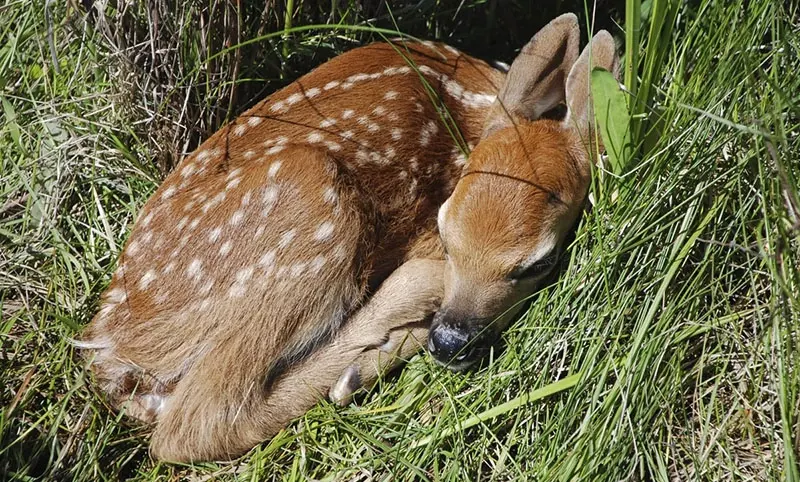
5. Returning To Sleep In The Same Spot
When deer have found a relatively safe bedding area, they are inclined to return to sleep in the same spot repeatedly. While the animals are known to change locations often (even during a single sleeping session), they will come back to a few good bedding locations to sleep in.
In order for a bedding area to feel safe enough to return to multiple times, the animals will have a few requirements for the perfect ‘sleeping spot’:
- Sufficient cover so potential predators cannot easily spot them
- Open view of a large area in order to spot any potential dangers
- The ability to hide from the rain or other weather elements
- Soft natural bedding like tall grass or a pile of leaves
6. Fawns Sleep With An Extreme Heartrate
Much like human babies, a newborn fawn is a natural-born sleeper. Compared to adult deer, a young fawn will sleep a lot more, about 95% of the time they are bedded. But don’t think the young animals are relaxed while doing this.
During their extensive bedding time, a fawn has an incredibly high heart rate of around 175 beats per minute. The senses of a baby deer are on high alert and shift immediately when potential danger is detected, dropping their heart rate to an average of only 60 beats per minute.
When the extremely high heart rate drops, the body of a hiding fawn is much more difficult to detect by potential predators. The animals breathe less, tuck their head into their legs, and pull their ears back to become as small and undetectable as possible.
7. Deer Don’t Usually Sleep At Night
People commonly think that deer are most active at night, but that’s not true. Deer are not considered nocturnal, but are instead crepuscular species, meaning they are most active during the twilight hours of the day (dawn and dusk).
While it is true that deer don’t often sleep at night, they are most active during the hours around sunrise and sunset.
The main benefit of being a crepuscular animal is decreasing the odds of getting preyed upon. During twilight hours (dawn and dusk), it is much harder for nocturnal and diurnal predators to track prey. This gives deer and other crepuscular wildlife the edge needed to survive as a species.
8. Winter Hibernation Is Not For Deer
While most deer species do lower their activity in the coldest months, the animals never go into hibernation. It is true that deer will hunker down for multiple days or weeks on end to avoid the cold, but they don’t fatten up enough before winter to survive going into full hibernation mode.
Mule deer, moose, elk, and reindeer are more inclined to be active during the winter months than other species, such as white-tailed deer. These species have adapted to colder climates and will remain active for the majority of autumn, winter, and spring.
It is safe to conclude that hibernation is not for deer, but that doesn’t mean they enjoy being in the cold. Hunkering down and bedding longer is their preferred solution to the cold!
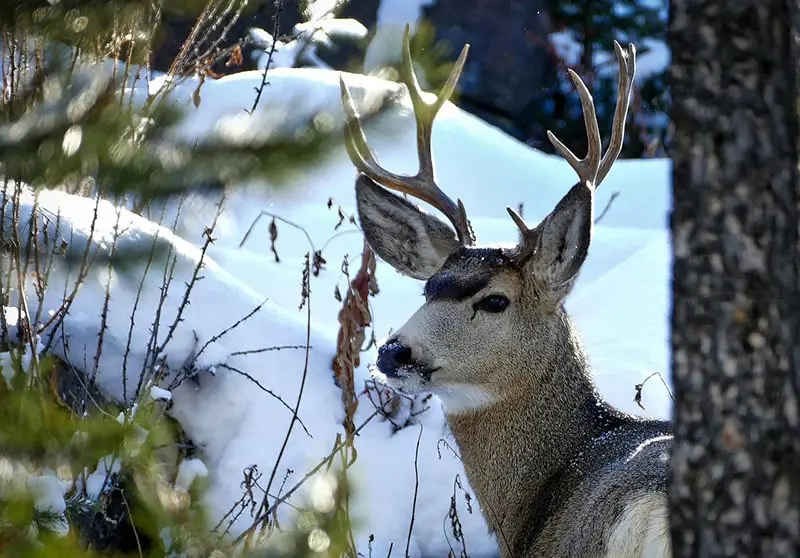
9. Bucks In Rut Rarely Ever Sleep
During the rutting season, bucks change everything about their normal behavioral patterns. A buck will generally not sleep or eat during the height of rutting season. Mals will be too focused on finding a mating partner and driving out competitors.
Only after the buck found a suitable female and has successfully mated, he will take some to snooze and find food.
However, he will spend most of his time defending his territory and female from other interested males that are roaming the area. There will be very little time for a quick nap if you want to have children as a buck!
10. Sleeping Beside The Road Is Common
There is a reason why deer-vehicle collisions are such a common occurrence, especially when the colder months are approaching. An elevated road gives a sense of protection and will be a source of warmth for the animals.
The false feeling of safety the road might provide (the asphalt retaining the heat after the sun has set is the main culprit) motivates deer to stick around and take some rest longer than necessary.
If you find a doe or buck near the side of the road, you might want to consider shooing the animal away when it is safe to do so. Alert oncoming traffic before you do so, because you want to avoid the animals panicking and running into cars.
11. Like All Mammals, Deer Are Able To Dream
Even though a deer won’t stay in the dream state very long due to their short-interval sleeping patterns, a deer is able to dream. Deer get about 30 minutes of REM sleep per day, which is the deeper sleep phase in which dreams are produced.
What deer dreams are made of, we can only guess. Probably about food, other members of their herd, or maybe even about running away from that predator.
Maybe it’s true that when deer dream, they visit us when we are in that dream state ourselves. After all, humans assign a lot of value to deer appearing in their dreams…
